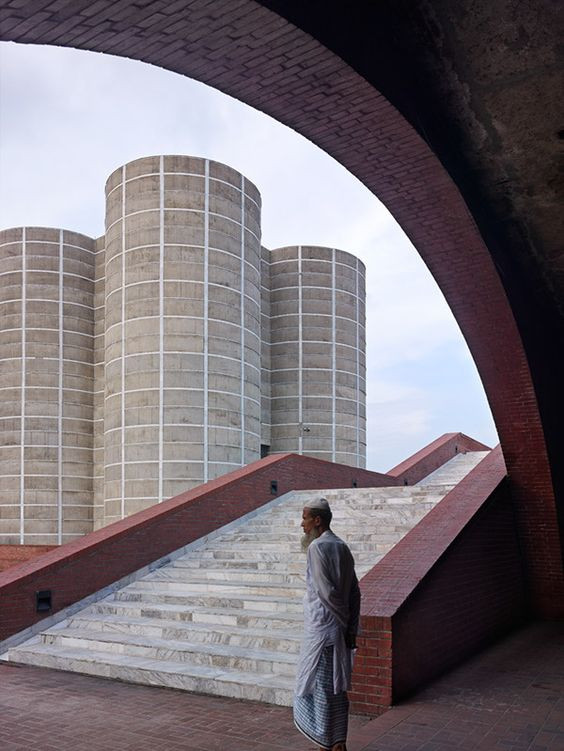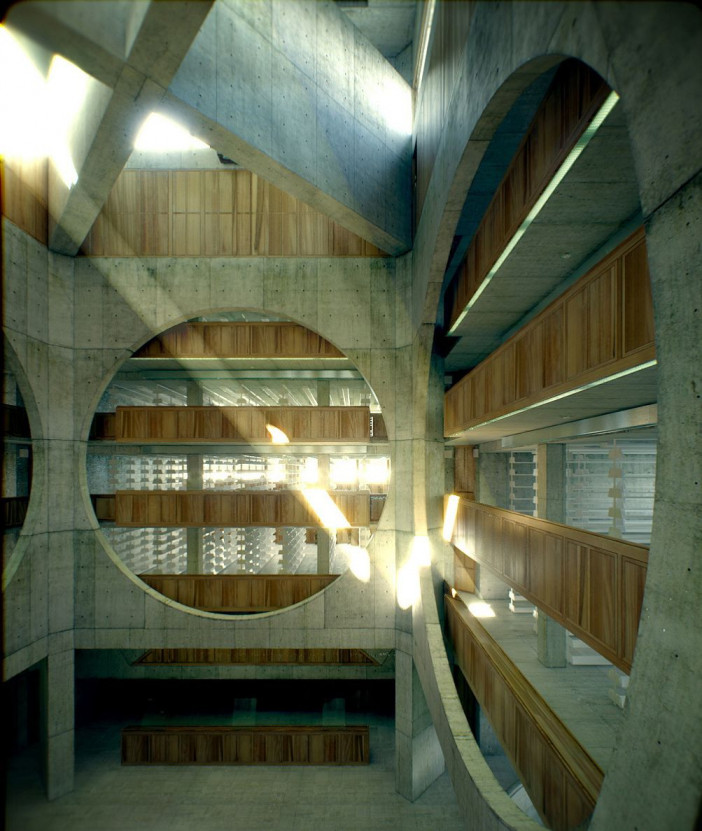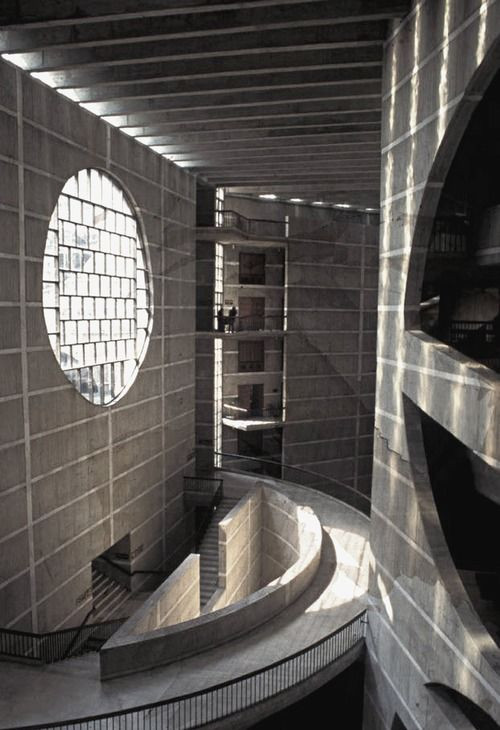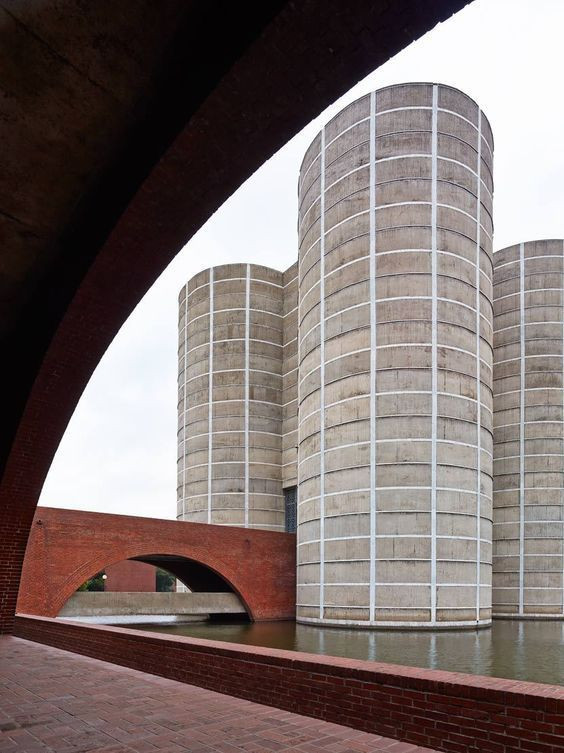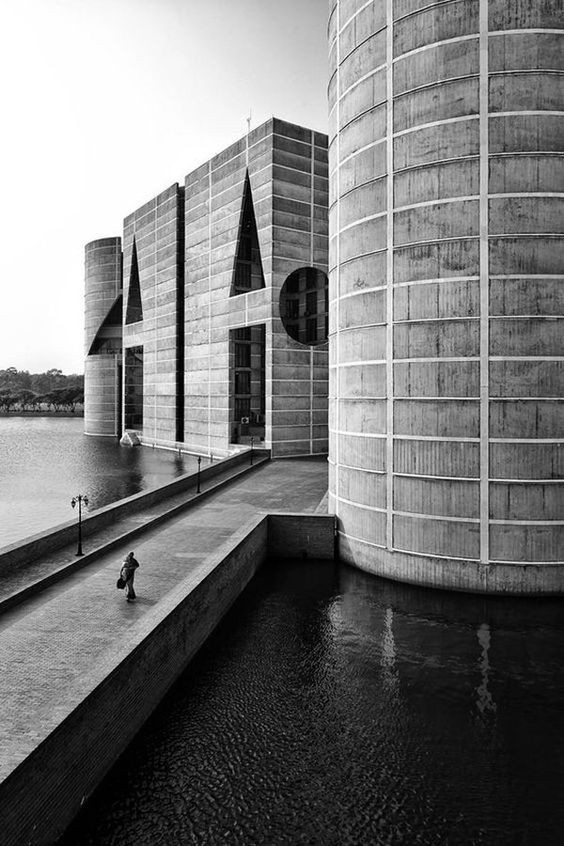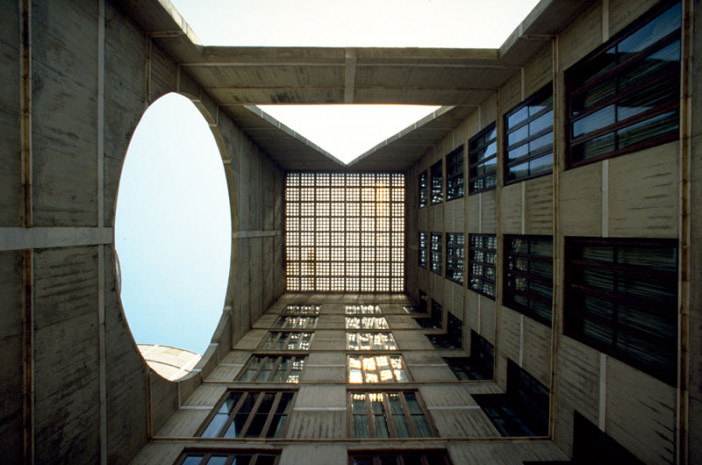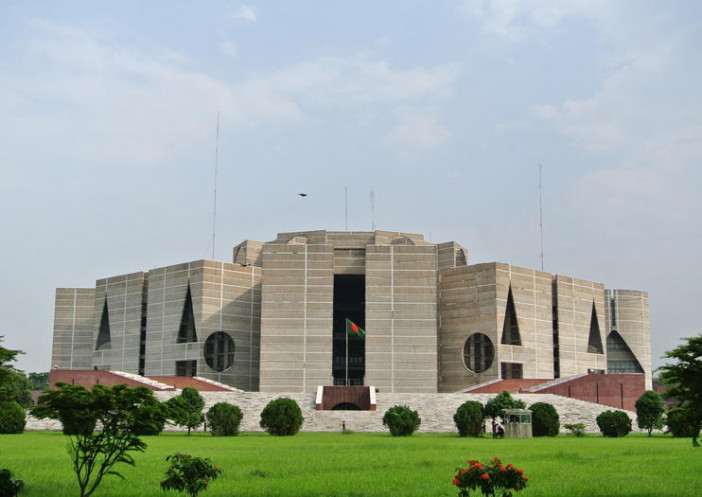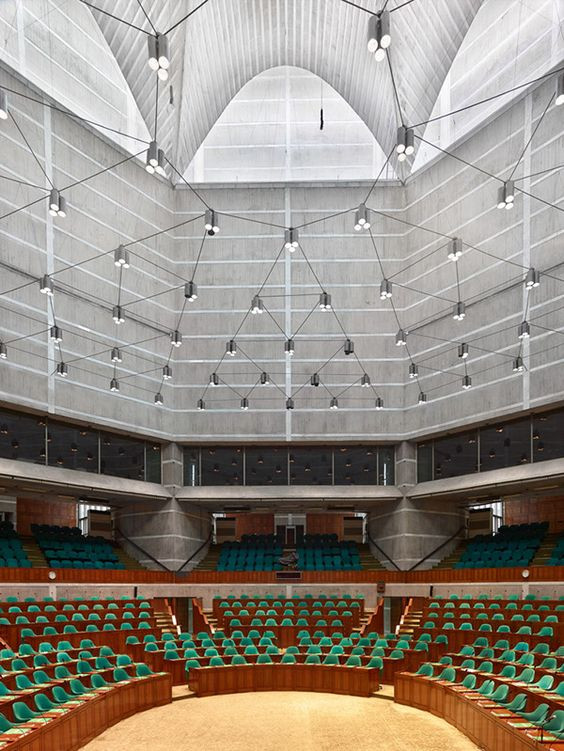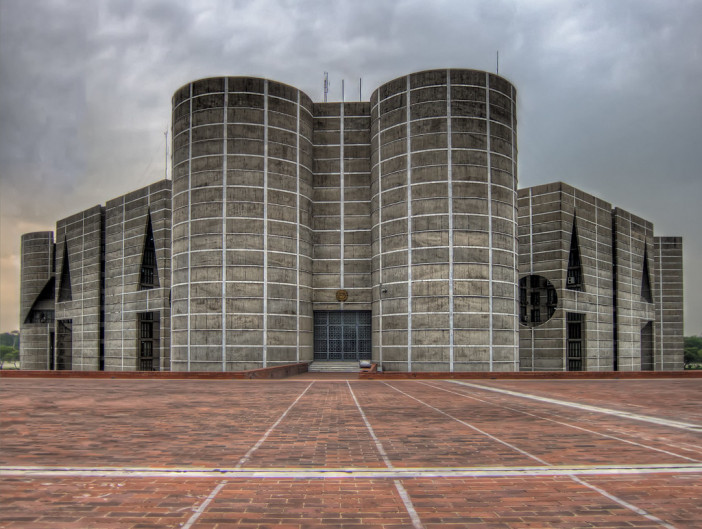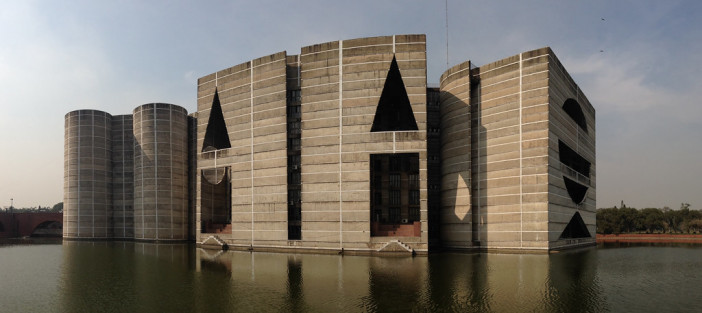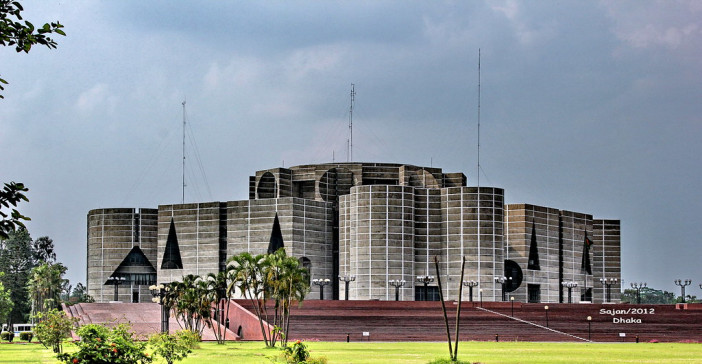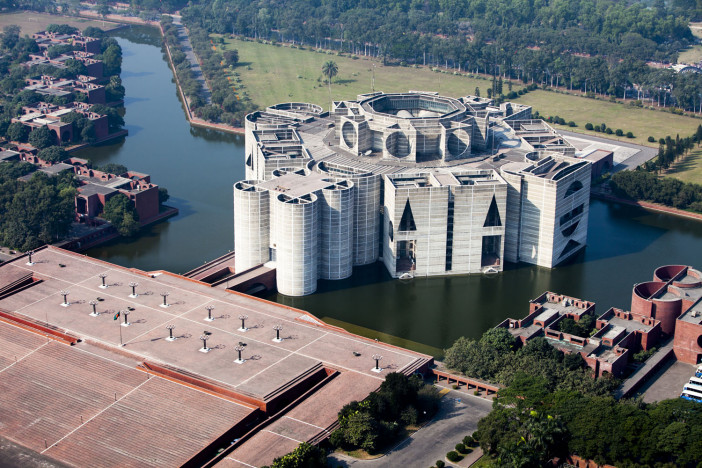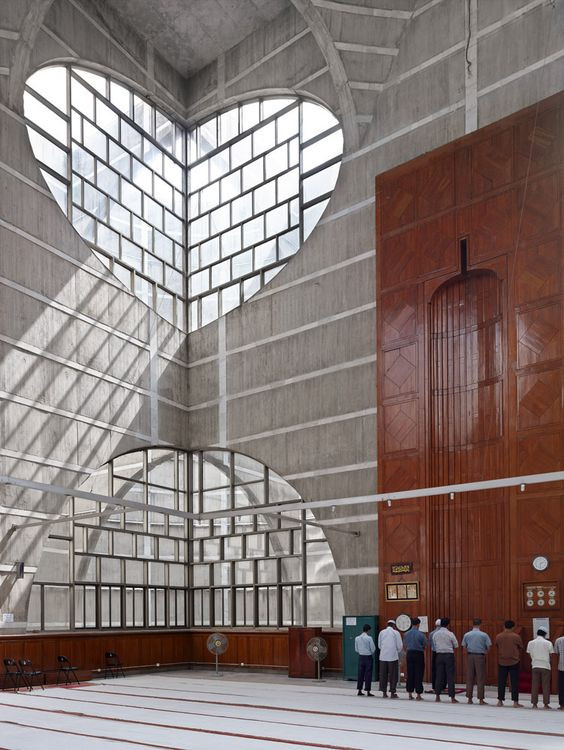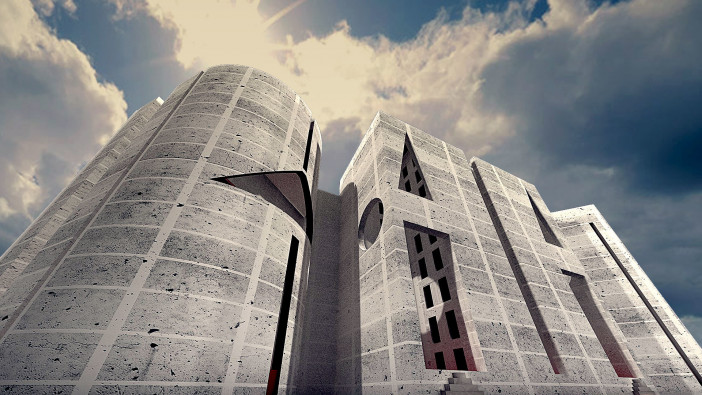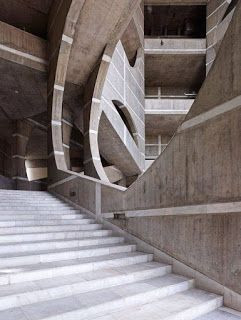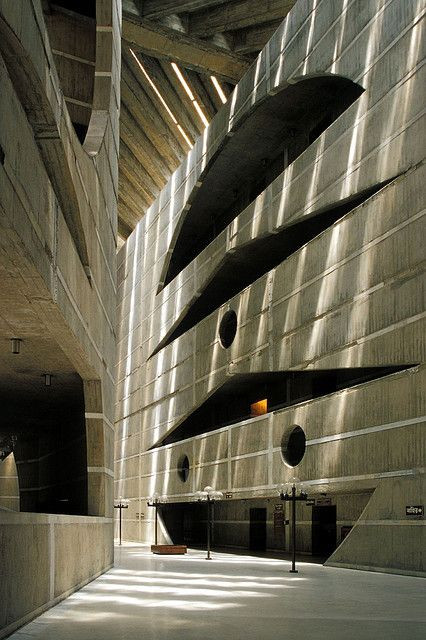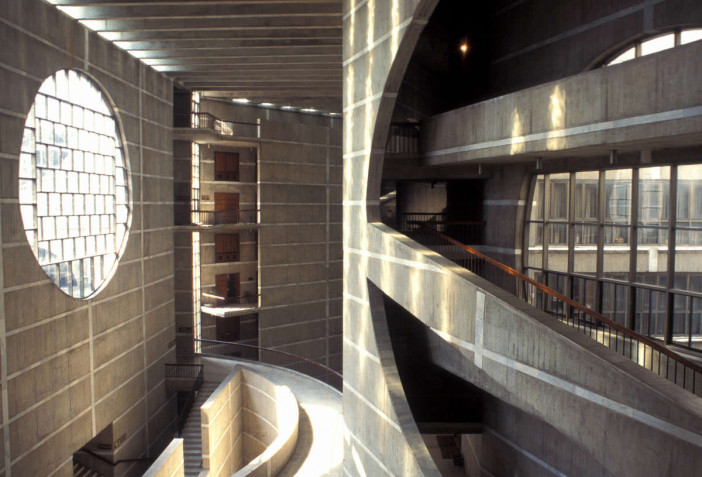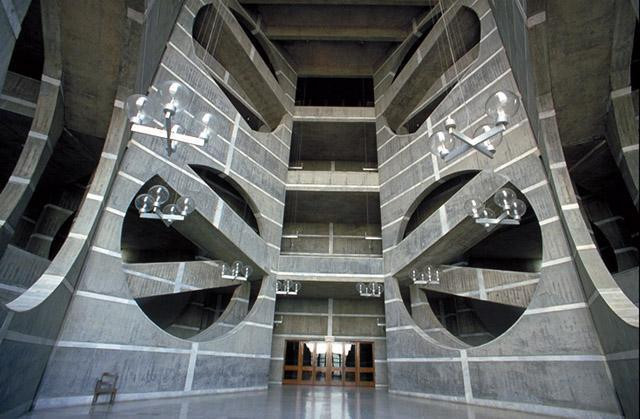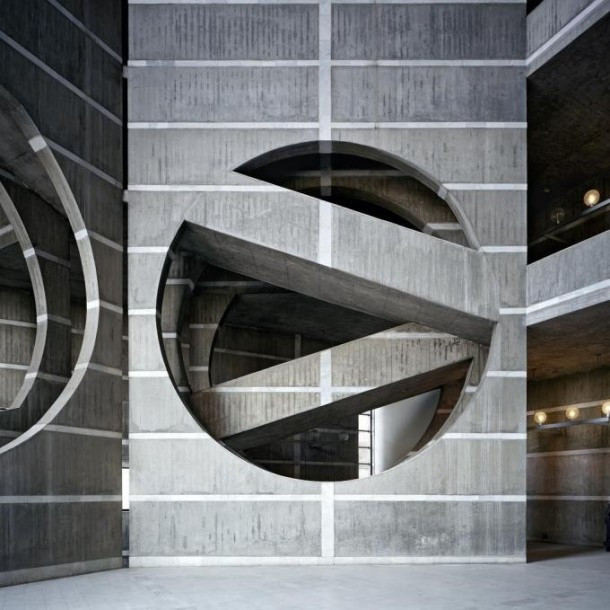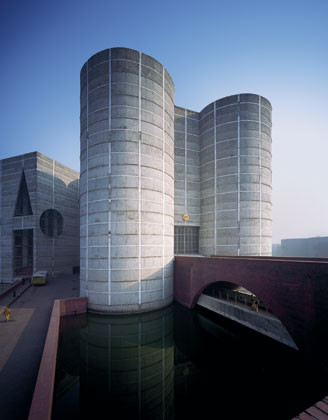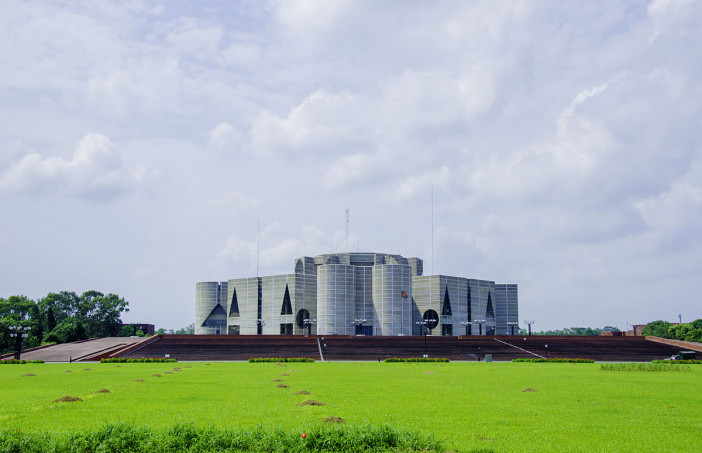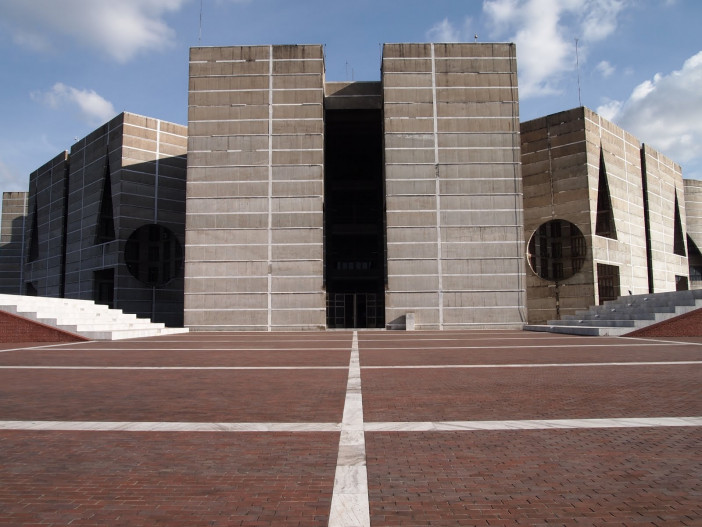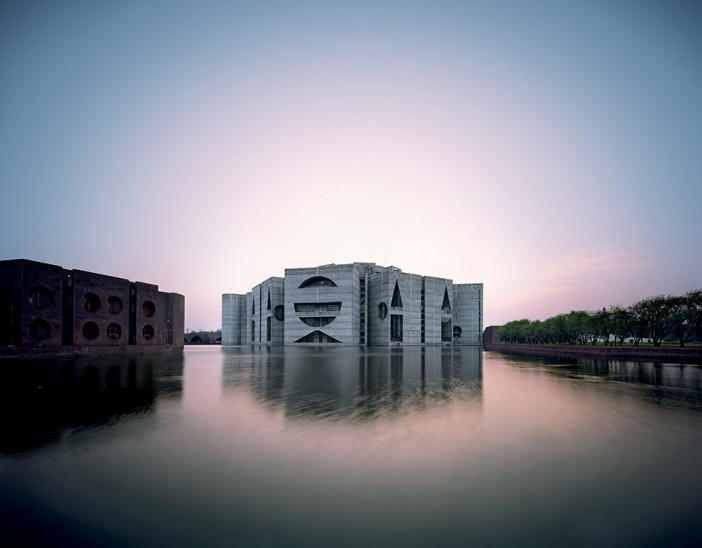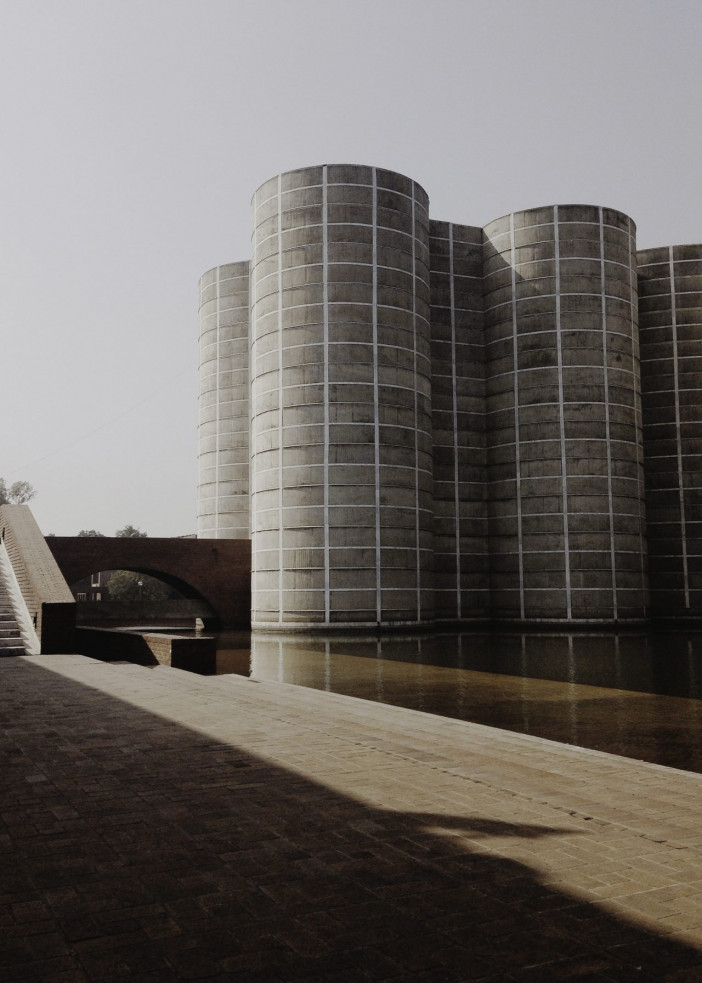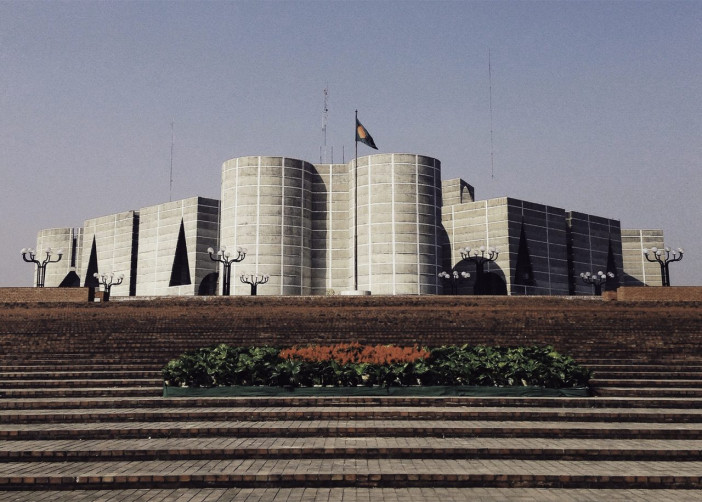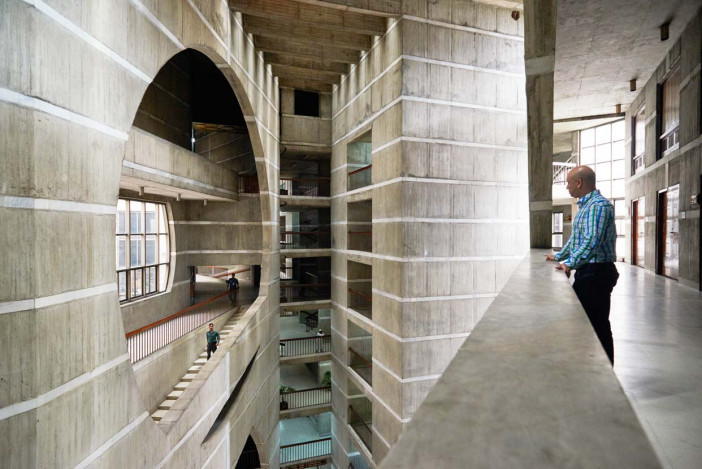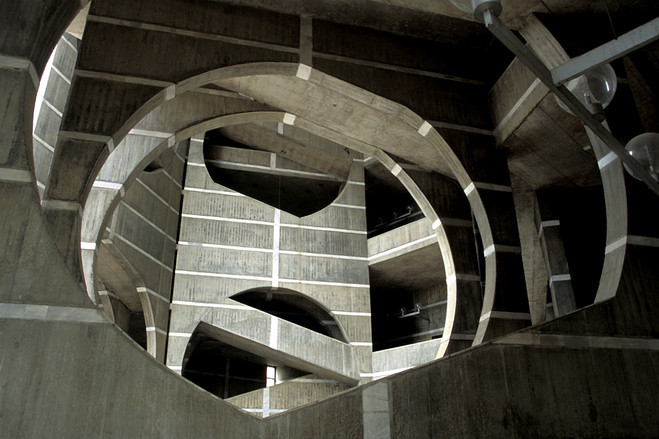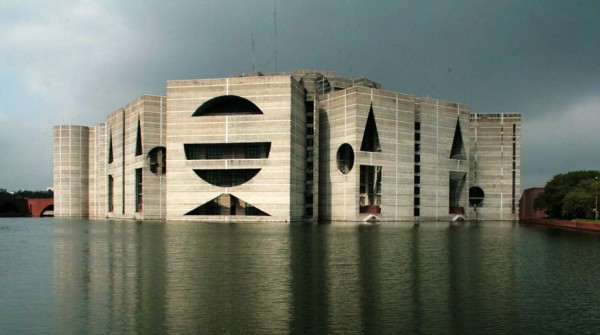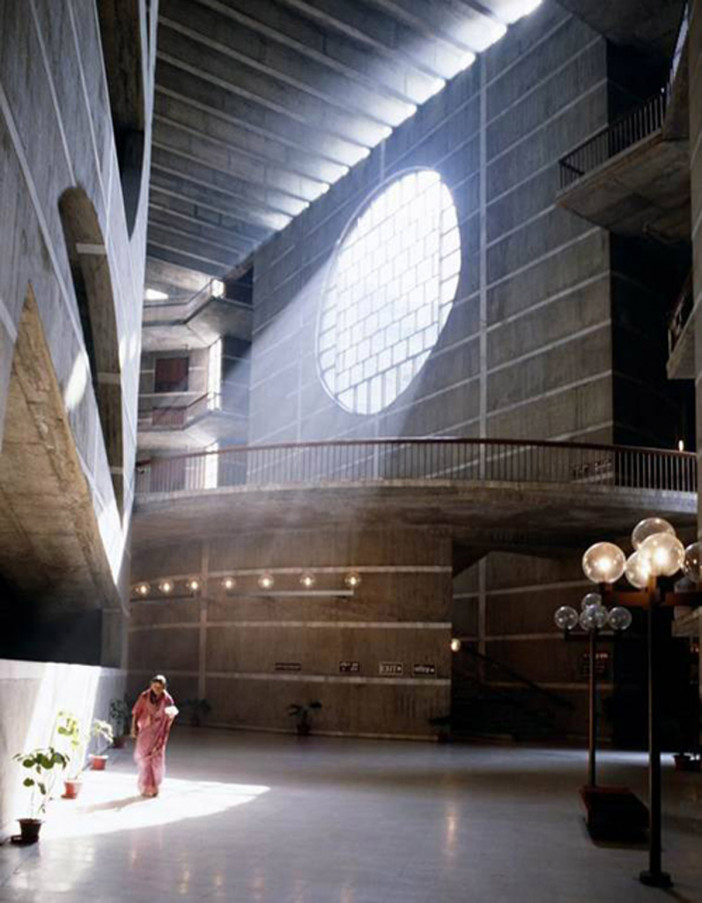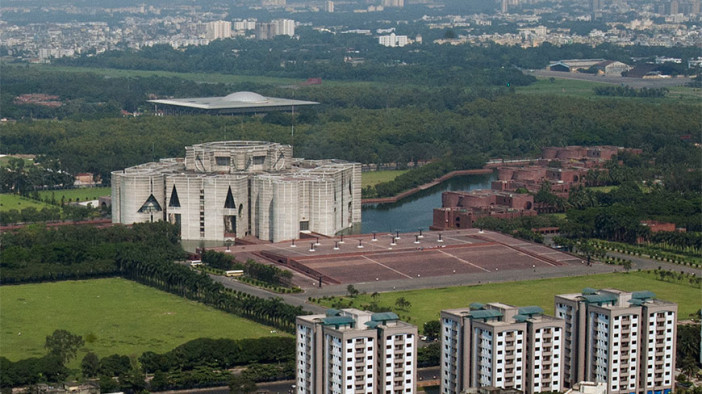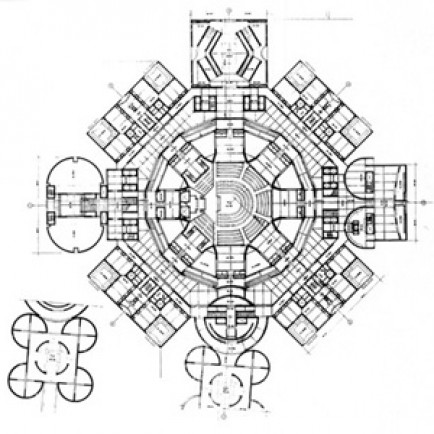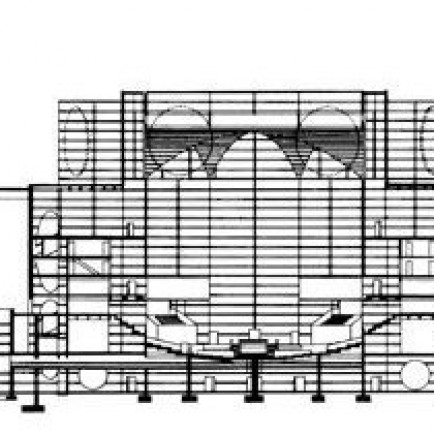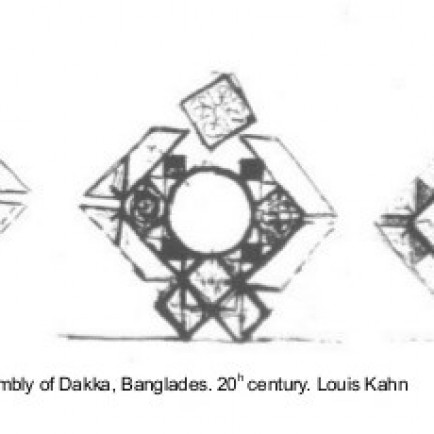National Parliament House
History
The National Parliament House, also known as Jatiyo Sangsad
Bhaban, is in Dhaka, Bangladesh. It was designed by architect Louis Kahn
and is one of the largest legislative complexes in the world. It houses all
parliamentary activities of Bangladesh. This building is an extraordinary
example of modern architecture being transcribed as a part of Bangali
vernacular architecture.
The National Assembly building, completed in 1982, stands as one of Kahn’s most prominent works, but also as a symbolic monument to the government of Bangladesh. The National Assembly Building was conceptually conceived in 1959 by the government of Pakistan as an extension to their parliamentary headquarters. It wasn’t until 1962 that Louis Kahn was commissioned to design the governmental headquarters. However, in March of 1971 construction was halted as Bangladesh had declared independence from Pakistan. Originally, Kahn had intended to make a building of monumental presence, but after Bangladesh had officially broke from Pakistani rule in December of 1971 the project became much more of a symbol of democracy and pride for the Bangali people. The building was finally completed in 1982 at more than double the initial estimated cost for completion at $32 million.
Description
The main feature of the building is its monumental presence. The great mass of concrete lined with strips of marble, marked by the outer wall openings and the predominance of geometric forms of circular and rectangular concrete offer a great tribute to the building, consistent with the noble functions that take place in the interior. The intention of Kahn for the parliament was to produce an ideal expression for the new democracy by using perfectly geometric shapes: circle, the half circle, square and triangle.
As for the structure one cannot find a column inside the building. The columns have disappeared inside the divisive elements that have adopted the function of bearing walls. It’s more like a large mass of concrete that has been digging and sculpting itself to achieve a perfect functional entity.
One of the most important considerations to take into account during the project was protection from the sun and heavy rains and at the same time allow the free circulation of air. This was achieved by giving the facades at grade geometric openings in the form of triangles, rectangles, circles and arcs. It avoids any conventional method of placing the windows on the outside as well as the disadvantages of the composition of a typical monument building.
Details
الموقع
Dhaka, Bangladesh
المالك / المتبرع
Public Works Department, Dhaka, Bangladesh
المعماري
تاريخ البناء
1982
Area
800,000 sqm
الرسومات المعمارية
الخريطة
History
The National Parliament House, also known as Jatiyo Sangsad
Bhaban, is in Dhaka, Bangladesh. It was designed by architect Louis Kahn
and is one of the largest legislative complexes in the world. It houses all
parliamentary activities of Bangladesh. This building is an extraordinary
example of modern architecture being transcribed as a part of Bangali
vernacular architecture.
The National Assembly building, completed in 1982, stands as one of Kahn’s most prominent works, but also as a symbolic monument to the government of Bangladesh. The National Assembly Building was conceptually conceived in 1959 by the government of Pakistan as an extension to their parliamentary headquarters. It wasn’t until 1962 that Louis Kahn was commissioned to design the governmental headquarters. However, in March of 1971 construction was halted as Bangladesh had declared independence from Pakistan. Originally, Kahn had intended to make a building of monumental presence, but after Bangladesh had officially broke from Pakistani rule in December of 1971 the project became much more of a symbol of democracy and pride for the Bangali people. The building was finally completed in 1982 at more than double the initial estimated cost for completion at $32 million.
Description
The main feature of the building is its monumental presence. The great mass of concrete lined with strips of marble, marked by the outer wall openings and the predominance of geometric forms of circular and rectangular concrete offer a great tribute to the building, consistent with the noble functions that take place in the interior. The intention of Kahn for the parliament was to produce an ideal expression for the new democracy by using perfectly geometric shapes: circle, the half circle, square and triangle.
As for the structure one cannot find a column inside the building. The columns have disappeared inside the divisive elements that have adopted the function of bearing walls. It’s more like a large mass of concrete that has been digging and sculpting itself to achieve a perfect functional entity.
One of the most important considerations to take into account during the project was protection from the sun and heavy rains and at the same time allow the free circulation of air. This was achieved by giving the facades at grade geometric openings in the form of triangles, rectangles, circles and arcs. It avoids any conventional method of placing the windows on the outside as well as the disadvantages of the composition of a typical monument building.


